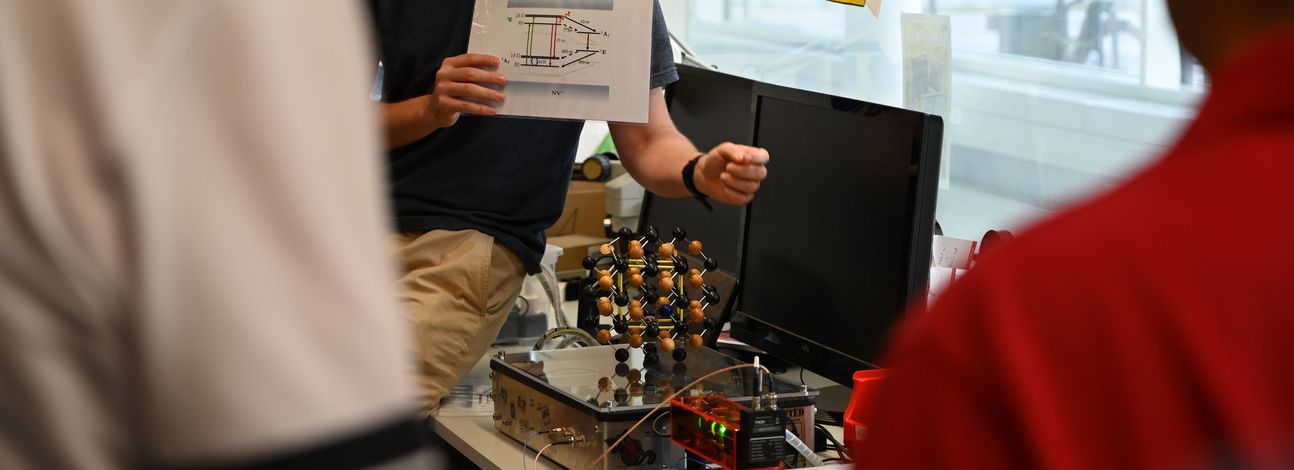Alexander Holleitner and Jonathan Finley were delighted with the large audience at the event “Mit verschränktem Licht sicher kommunizieren”, as every seat in the packed seminar room at the Center for Nanotechnology and Nanomaterials was taken. On Monday evening, the two directors of the WSI hosted the event series “MQV-Einblicke – 100 Jahre Quantenwissenschaften und woran wir heute forschen”.
Right at the beginning, visitors were shown the important role that individual particles of light, called photons, play as information carriers in quantum technologies, for example in photonic quantum computing or in the transmission of information over long distances. In his lecture, Jonathan Finley, head of the TUM Chair of Semiconductor Nanostructures and Quantum Systems, addressed how to generate individual light particles "at the touch of a button," so to speak, and ensure they are indistinguishable, that is, have the same polarization and wavelength, for example. The indistinguishability of the light particles is important, for example for use in photonic quantum computing. Finley focused particularly on single-photon sources – light sources that never emit more than one photon at a time – which are produced by combining different semiconductor materials in a clever way. For example, when a thin layer of indium arsenide is applied to a gallium arsenide substrate, the atoms in the indium arsenide layer rearrange and form small “islets” – “like drops of water on a glass plate,” Finley drew the comparison, “only much smaller.” These so-called quantum dots are only a few nanometers in size. Similar effects to those in a single atom occur in them, which is why they are also referred to as artificial atoms. For example, electrons trapped in a quantum dot only occupy discrete energy states. When an electron is excited and falls back into a lower energy state, a single photon is emitted.
Following Professor Finley's lecture, Alexander Holleitner, head of the TUM Chair of Nanotechnology and Nanomaterials, took the floor. In his lecture, he provided more details about the phenomenon of entanglement, explaining how an entangled state can be realized using two photons and their polarization property. He also demonstrated how this quantum mechanical phenomenon defies the classical principles of locality and reality. Even though the planned live experiment on the entanglement of photons could not be carried out – due to the many visitors in the room, it had become too warm for the sensitive experiment – the guests listened attentively to Holleitner's explanations, in which he outlined the idea of the experiment to prove entanglement. This was discussed as a thought experiment as early as 1935 but could only be realized decades later with new technology for generating and detecting individual photons and was finally awarded the Nobel Prize in 2022.
After the presentations, guests eagerly asked questions and took the opportunity to examine the experiment brought by Alexander Holleitner closely and have the two professors explain the various components to them. During the subsequent tour, guests were able to view the clean rooms and visit a laboratory where so-called NV centers – nitrogen defects in diamond layers – are used. This physical system can also be used as a single-photon source.
More information:
All other events in the “MQV-Einblicke” series, with links to registration, can be found here: https://www.munich-quantum-valley.de/quantum-2025/mqv-einblicke
An overview of all further events organized by MQV and its partners to mark the International Year of Quantum can be found here: https://www.munich-quantum-valley.de/quantum-2025
